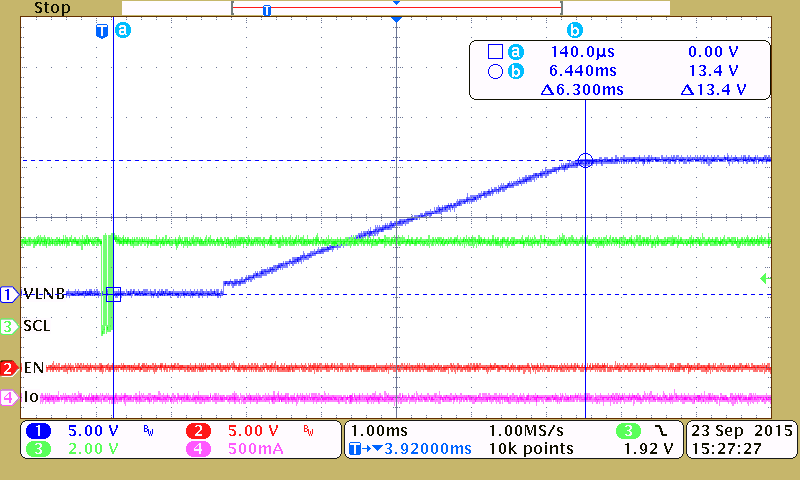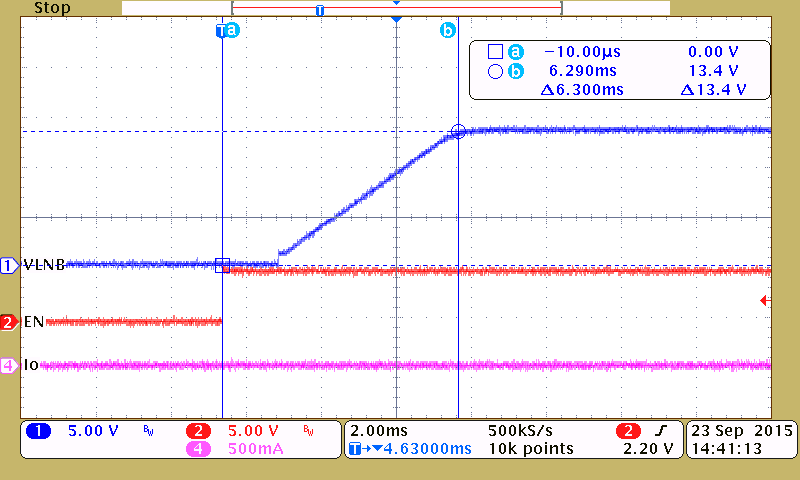JAJSFS2D November 2015 – May 2021 TPS65235
PRODUCTION DATA
- 1 特長
- 2 アプリケーション
- 3 概要
- 4 Revision History
- 5 Pin Configuration and Functions
- 6 Specifications
-
7 Detailed Description
- 7.1 Overview
- 7.2 Functional Block Diagram
- 7.3
Feature Description
- 7.3.1 Boost Converter
- 7.3.2 Linear Regulator and Current Limit
- 7.3.3 Boost Converter Current Limit
- 7.3.4 Charge Pump
- 7.3.5 Slew Rate Control
- 7.3.6 Short Circuit Protection, Hiccup and Overtemperature Protection
- 7.3.7 Tone Generation
- 7.3.8 Tone Detection
- 7.3.9 Disable and Enable
- 7.3.10 Component Selection
- 7.4 Device Functional Modes
- 7.5 Programming
- 7.6 Register Maps
- 8 Application and Implementation
- 9 Power Supply Recommendations
- 10Layout
- 11Device and Documentation Support
- 12Mechanical, Packaging, and Orderable Information
パッケージ・オプション
メカニカル・データ(パッケージ|ピン)
- RUK|20
サーマルパッド・メカニカル・データ
- RUK|20
発注情報
7.3.9 Disable and Enable
TPS65235 has a dedicated EN pin to disable and enable the LNB output. At non-I2C application, when the EN pin is pulled to high, the LNB output is enabled, when the EN pin is pull to low, the LNB output is disabled. At I2C application, either EN pin is low or high, the I2C registers can be accessed, which allows customer to change the default LNB output when system power up. When the bit I2C_CON of Control Register 1 is set to “1”, the LNB output enable or disable is controlled by bit EN of Control Register 2. By default, the bit I2C_CON of the control register is set to “0”, which makes the LNB output is controlled by the EN pin. Figure 7-3 and Figure 7-4 shows the detail control behavior.

| EN pin = 0 V | Bit I2C_CON = 1 |

| Bit I2C_CON = 0 |